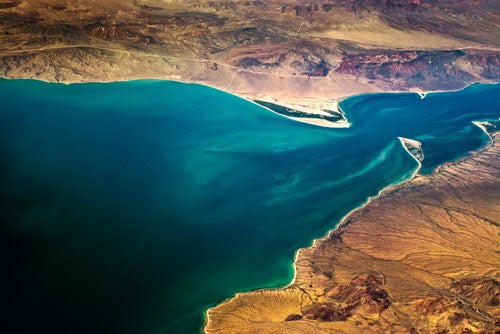Note: Yale School of the Environment (YSE) was formerly known as the Yale School of Forestry & Environmental Studies (F&ES). News articles and events posted prior to July 1, 2020 refer to the School's name at that time.
The coastal areas of the world's oceans, once thought to be a source of atmospheric carbon dioxide, now absorb carbon, according to a new paper published in the journal Nature.

In a comprehensive review of the latest research into the carbon cycle of coastal regions, a team of researchers, including Peter A. Raymond of the Yale School of Forestry & Environmental Studies, contends that human activities have transformed the role these systems play in the global carbon budget. The planet’s coastal ocean includes rivers, estuaries, tidal wetlands and the continental shelf.
One major factor is the increased growth of microscopic plants—fed by fertilizer runoff from rivers—which absorb carbon dioxide, carrying it to the ocean floor when the plants die.
The researchers add, however, that considerable additional research and monitoring is necessary to calculate just how much human activities are affecting carbon flux from these coastal subsystems.
“Humans have changed the rate of these coastal fluxes, but we're still trying to figure out the extent,” said Raymond, a professor of ecosystem ecology whose research focused on the role of rivers in the global carbon cycle. “This is almost more of a call to arms to figure out that anthropogenic component.”
One major factor is the increased growth of microscopic plants—fed by fertilizer runoff from rivers—which absorb carbon dioxide, carrying it to the ocean floor when the plants die.
The researchers add, however, that considerable additional research and monitoring is necessary to calculate just how much human activities are affecting carbon flux from these coastal subsystems.
“Humans have changed the rate of these coastal fluxes, but we're still trying to figure out the extent,” said Raymond, a professor of ecosystem ecology whose research focused on the role of rivers in the global carbon cycle. “This is almost more of a call to arms to figure out that anthropogenic component.”
Humans have changed the rate of these coastal fluxes, but we're still trying to figure out the extent.
Using the latest available data, the researchers estimate that the coastal ocean absorbs as much as two-thirds more carbon than it emitted during the pre-industrial era. According to their findings, a century ago coastal areas released about 150 million metric tons of carbon annually. Now, these waters absorb about 250 million metric tons of carbon per year.
But the effects of climate change, including sea-level rise, will add even more uncertainty over how coastal oceans affect the global carbon cycle, said Thomas S. Bianchi, a professor of geological sciences at the University of Florida and a co-author of the paper.
“The passive and active margins of the world process carbon in different ways which in turns affects how much is buried in coastal sediments and how much is lost to the atmosphere in CO2,” Bianchi said. “Climate change will affect these processes and we need to better understand how.”
The lead author of the paper is James E. Bauer, a professor of evolution, ecology and organismal biology at Ohio State University (read the OSU press release).
“Compared to the open ocean, we know less about the coastal ocean’s carbon cycle even though it’s right in front of us,” Bauer said. “There is an intense need for more research because we don’t currently have the data to know exactly what’s going on everywhere.
“The methods are there now that weren’t available 50 years ago,” he said. “We just have to commit to increasing the number and types of coastal regions being studied.”
In another recent study, Raymond reported that the planet's rivers and streams are leaking more carbon dioxide than previously believed.
But the effects of climate change, including sea-level rise, will add even more uncertainty over how coastal oceans affect the global carbon cycle, said Thomas S. Bianchi, a professor of geological sciences at the University of Florida and a co-author of the paper.
“The passive and active margins of the world process carbon in different ways which in turns affects how much is buried in coastal sediments and how much is lost to the atmosphere in CO2,” Bianchi said. “Climate change will affect these processes and we need to better understand how.”
The lead author of the paper is James E. Bauer, a professor of evolution, ecology and organismal biology at Ohio State University (read the OSU press release).
“Compared to the open ocean, we know less about the coastal ocean’s carbon cycle even though it’s right in front of us,” Bauer said. “There is an intense need for more research because we don’t currently have the data to know exactly what’s going on everywhere.
“The methods are there now that weren’t available 50 years ago,” he said. “We just have to commit to increasing the number and types of coastal regions being studied.”
In another recent study, Raymond reported that the planet's rivers and streams are leaking more carbon dioxide than previously believed.
– Kevin Dennehy kevin.dennehy@yale.edu 203 436-4842
Published
December 6, 2013